#slavic cuisine
Explore tagged Tumblr posts
Text
Delicious Syrniki! 😋💕 (first solid food I was able to have since 2023)

Screw it. I made and had those a few weeks ago.
Sharing this picture and moment is a big deal & emotional for me, because it's the first solid food I've eaten in 19 months.
You may think that's impossible. Well, it's not. Let me tell you why:
🏥 I've been struggling with an autoimmune condition (MAS, among them severe, chronic inflammatory bowel disease) since years & couldn't digest anything anymore since August/September 2023 after it got worse due to massive adrenaline & cortisol overproduction in my body; hormones that are notorious for causing autoimmune diseases & making them flare/worsen significantly. 💊 ❄️ In fall/winter 2023 doctors informed me my condition has become so severe it's considered terminal & I started to require palliative care in the shape of parenteral feeding (= bypassing the digestive tract) via an intravenous port & nutrient/fat/glucose solutions being dripped into me to keep me alive a little longer & try to see if any treatment still works, after about 2 years of almost exclusively being able to have "space food" - high caloric drinks to sustain me - along with starting to receive high doses of tranquilizing pain killers & immune blockers, which were helpful, but have severe side effects. 🛌 ☢️ In March 2024 I was then diagnosed with stomach & duodenal cancer as a result to how severely the disease had escalated. 🤕



More of the story below the cut. Otherwise please just appreciate the delicious food. 🌈🥞✨
Bottom line is, I was very reluctant to share this, bc I'm very emotional about this. I cried while eating those, bc tasting something sweet, creamy, delicious & warm on my tongue has been something I couldn't experience in so long & there was a real risk for me to die without ever being able to taste something nice again. 🙈🥲 It was a bit too ambitious, so for now I'm back to broth and space food and the occasional spelt porridge. But here's to celebrating a huge win in my life! 💗🌼🌈



On with the story of how all this developed: By May 2024 I was being treated with 3x the regular amount of blockers to regulate these stress hormones, but it didn't do much, since the underlying reasons for them being as high were nothing I could resolve, however hard I tried. There were many additional health issues I went through and in parts am still going through in this time as well, that put me in critical condition, such as a bone inflammation caused by an infection merging with arthritis in my foot, resulting in a debridement surgery in September 2023, phlebitis as a result to wearing the intravenous parenteral port for so long in June 2024; having sinusitis for months, as a result from a lacrimal gland inflammation due to too much crying, inflammation in many organs connected to the digestive system (autoimmune pancreatitis, hepatitis, cholecystitis etc.) due to the intestinal and stomach inflammation and ulcers spreading and severe heart problems, due to a preexisting heart condition being worsened by the anesthesia during treatments, the physical weakness all this caused, as well as severe and ongoing stress that persisted daily due to a social situation over the course of 14 months. Eventually the underlying situation lessened a bit and I felt confident that my upcoming cancer surgeries & treatments would go well and finally bring the anticipated relieve I've waited for for so long with the necessary peace to prepare, go through all this and recover, before a final escalation happened, just days before the long-planned hospital stay for surgeries to cauterize the ulcers and remove cancerous growths in my digestive tract started on 16th September 2024. It continued to escalate in the background throughout this time.
But anyways, in early October 2024 I finally was able to start chemotherapy, away from all this. It works well so far, I'm doing better since, the hormonal overproduction has lessened somewhat & my mental health has stabilized somewhat. I'm still getting IVs, because my ability to digest is still inconsistent and there's been some throwbacks due to side effects of the chemo. And after over a year of no digestive function it was also questionable whether my system would be able to pick up work again at all or whether I'd simply kick the bucket and starve to death eventually. The IV nutrition was already a slow version of that, I lost more than half my weight since September '23, I barely have any muscles left and need to recover from all that and mental health damage... The bottom line is, 2024 and a large chunk of 2023 were really bad and thankfully 2025 looks significantly better. There's finally a treatment that works a bit and helps my health improve, although chemo mostly kills the diseased tissue and regrowing fresh one takes time, regeneration will never be flawlessly possible and there will be a lot of permanently impairments and scarred tissue inside of me. And the places I'm in and people I surrounded myself with are respectful of this and I feel at peace, loved and confident once more.
🌈🌼✨ But after all the hardships, I have a positive thing to share today 🌈🌼✨
I had these delicious thingies up there a few weeks ago, sharing them with a kind neighbour who supported me with when I needed help bc of mobility issues and other problems throughout this time. I actually made a post mentioning it but was so was reluctant to share and celebrate this milestone, because I'm very emotional about this whole journey, but it is such a huge win for me!!!!! 😭 I already said it above, but I actually cried while eating this, just because tasting something sweet and creamy and delicious and warm on my tongue and in my tummy that is so much in pain the entire time, is such a comforting sensation and has been a pleasure denied to me for so so many months and also because there was a serious risk for me to die while all these horrible things were happening and for months I didn't think that I'd ever live to taste something nice again. 💔 I'm still here every day, feeling like "oh gods, I'm still alive, I can't believe I'm still alive and get to experience goodness". 😖😭🫂 I went a bit too ambitious with trying these and still got symptoms again and had to go back to space food, broth and some low acidic fruit. Taking it slow rn. But you know. It's a progress. Healing is messy and not gradual. There is no such thing as perfection in human beings. Decency and trying, sometimes failing, but always staying in motion is quite enough. 🌼🌌
#food#foodporn#foodie#food photography#foodpics#baking#dessert#cuisine#slavic#slavic cuisine#russian cuisine#polish cuisine#syrniki#pancakes#cheesecake#spilled thoughts#mental health#chronic illness#terminal illness#psychology#physical health#life#journal entry#healing#healing journey#body healing#disability#physical disability#cottage core#cooking
17 notes
·
View notes
Text

Polish Podpłomyk with Mushrooms (recipe in Polish)
#podpłomyk#mushrooms#food#polish cuisine#polish food#poland#foodblr#flatbread#flat bread#food photography#baking#easy recipes#slavic#slavic cuisine#slavic food#wild mushrooms#foodie#comfort food#podplomyk#dinner ideas
17 notes
·
View notes
Text
Asgardian, Vanir, Alfheimr, Olympus, Talokanil, Wakandan and Nidavellir cuisines in MCU HCs
Basically, Asgardians eat a mixture of Ancient Nordic, Medieval and Renaissance European foods
Since it is a colder planet in comparison to Alfheim, Asgard has a number of stews and roasts
Bread and potatoes are literally staples amongst Asgardian cuisine
Oh, and seafood is a popular culinary choice in Asgard too
One of Loki's fave foods is salmon stew btw
In MCU, Vanir cuisines are actually a mix of Central Asian, Slavic, Mongolic and Far East Siberian cuisines
Yeah Vanir culture has some nods to Central Asian, Slavic, Mongolic and Far East Siberian cultures in MCU btw
So the Vanirs LOVE dumplings, stews, LAMB AND MUTTON PREPARED IN ANY WAY, and a hunch of dairy in breakfasts
Light Elven cuisine of Alfheim basically has several nods to Mediterranean and Balkan cuisines
Basically it's got a hunch of fruits and vegetables, sweets and baked treats being VERY popular in Alfheim, and edible flowers are also popular in Alfheim too
Breakfasts are at times served in little trays of breakfast goods with fruit/floral scented tea or coffee ( imagine like an Ottoman style breakfast )
A popular street food includes hand pies of different flavours - sweet, savory, spicy, etc
Also a cultural drink of Alfheim is actually wine - as in different types of wine, not just wine made from grapes ( and the Light Elven grown ups in general LOVE to drink wine )
Dwarven cuisine in Nidavellir basically has a mix of elements of Germanic and Slavic cuisine
Being a more blacksmith geared culture, the Dwarves in general usually eat protein and dairy often as a way to sustain themselves in blacksmith relater stuff ( especially for Dwarven blacksmiths )
The Dwarves in general love a good drink - a cultural drink of Nidavellir is actually beer ( and the Dwarven grown up in general drink A LOT beer )
Wakandan cuisines defo has nods to East African and Nubian cuisines
Wakanda is rife in spices, and alcohol is popular for grown ups in Wakanda in general
Teas and coffees are popular in Wakanda too, amongst the staples of Wakanda include beans and maize
Olympus cuisines are defo have nods to Ancient Roman and Grecian cuisines
Olympus is rife with olives and fruits and vegetables - and the Olympus grown up residents in general LOVE wine
Oh and they also love cheeses ( which is a popular desert in Olympus )
Talokanil cuisines defo have nods to Mayan cuisine
Since they are an underworld kingdom, Namor's family actually managed to figure out underwater agricultural and all And underwater food supplies
Seafood is rife in Talocan, and ofc edible seaweeds and corals are amongst popular cuisines in Talocan
Amongst staples of Talokanil cuisine include maize, chili peppers and beans
And coffee and chocolate drinks are amongsr popular drinks in Talocan
🤩🤩🤩🥺🥺🥺
#asgardian cuisine#vanir cuisine#mcu nine realms#light elven cuisine#dwarven cuisine#nordic cuisine#germanic cuisine#slavic cuisine#mediterranean cuisine#olympus cuisine#talokanil cuisine#wakandan cuisine#mayan foods#east african cuisine#ancient greek cuisine#ancient roman cuisine
21 notes
·
View notes
Text
Solyanka - still not as salty as a losing gamer
Food is an important part of any culture. You can tell a lot about culture based on their beverages and cuisine. And in Slavic/Russian cuisine several things can easily prove it. We have (had?) a lot of fish dishes (a huge number of rivers), salting (harsher seasons), soups (again, harsher seasons), and the usual - different pastries (though this is pretty common). I could delve deeper into each category talking about kolach, okroshka, rassolnik, levashnik, kalja, oladyi, borsh, kurnik, shchi, ukha, botvinia, etc. But that wouldn't be really interesting if you would just get information without a recipe, wouldn't it?

So today we will focus on solyanka. There are actually two solyankas - one is a soup with pickles another is a main dish with cabbage. In this post, I will focus on the former - solyanka the soup!

This dish formed in the 15th or 17th century and was, basically, peasant food. It was a simple thick chowder with meat, cabbage, onion, and pickles. The current recipe appeared only in the 19th century with some new and several expensive ingredients - olives, capers, lemon, bread kvass, and salted or pickled mushrooms. There was a bit of a hassle among culinary scholars about why it got its name - either as a salty dish (solyanka is literally salt with a cute suffix), or as a denotation that it came from a rural area (russian word "selskiy" means rural, so they assumed that it was butchered word for "selyanka"). But most names of the dishes in Russian cuisine usually indicate the way a dish was prepared or consumed. So, how do you make a great solyanka?

This recipe can be used with both home-cooked broth and pre-cooked one. So, what do you need for a fancy solyanka? First, ingredients for the soup:
400 grams of beef - I use brisket, but you can use it shoulder or even shank (if you want to use it for a broth too).
200 grams of smoked sausages
~400 ml of grated tomatoes (I used 350 ml)
200 grams of onions
150 grams of carrot (to make it heartier)
40 grams of butter
120 grams of pickled cucumbers
100 grams of seedless black olives (or you can add another 100 grams of pickled cucumbers for that Peasant's Feast After Great Lent vibe)
200 ml of pickled cucumber brine
50 ml of olive brine (or replace with the same amount of pickled cucumber brine)
A bunch of dill greens
1-2 pcs of laurel leaf
2-3 pcs of peppercorn pepper
2-3 pcs of black pepper peas
sour cream to server
And now ingredients for the broth (you can just buy precooked broth if you want - I won't judge):
~2 litres of water
600 grams of beef bones (or shank if you will use it for both broth and soup)
150 grams of carrot
200 grams of onion
A pinch of dried thyme
5-6 pcs of peppercorn pepper
5-6 pcs of black pepper peas
2 leaves of laurel leaf

Part I - The Broth
I think it is the most important part of solyanka, so I don't slack here (you can though! If you are not obsessed with cooking, using precooked broth is fine). So, if you are going to cook broth, do this:
Wash the onions, peel them, and cut them in half.;
Wash the carrots, peel them, and cut them into 2-3 pieces each;
Rinse the beef bones under running water.;
Place the bones in a pot with approximately 2 liters of water and bring to a boil;
Once boiling, reduce the heat to low and simmer for 1.5 to 2 hours, skimming off any foam that forms;
Add the onions, carrots, thyme, and peppers 30-40 minutes before the broth is done;
Add the bay leaf 5-10 minutes before the end of cooking to avoid bitterness;
After the broth is ready, remove vegetables and meat. If you will use meat further, then cut it into pieces and follow the recipe



Part II - Solyanka
Now to the main part of the soup! You should do it after the broth is ready, or 10 mins before this because we will need to mix everything.
Peel the onions, and cut them into thin half-rings.
Peel the carrots, then shred them.
Heat a thick-bottomed frying pan and sauté the onions with carrots in butter until they soften.
Once the onions soften, add grated tomatoes and cook for another 5-7 mins.
Cut pickled cucumbers into cubes (I prefer to cut them into smaller ones, but medium-sized ones are fine too).
In a separate dry frying pan, sauté the cubed cucumbers with a small amount of broth (~200 ml) until they become pulpy, then add them to the sautéed onions and carrots.
Pour the cucumber brine into a saucepan, and bring it to a boil. Combine it with the meat broth and bring it all to a boil.
Cut smoked sausages and beef. Fry them in a pan for 5-10 minutes.
Add everything (sautéed onions with carrots and pickled cucumbers, meat, sausages, and olives - if you decided to use them) to the boiling broth with cucumber brine. Bring it to a boil and cook for another 20 mins.
After that add brine from the olives (if you decided to use it), peppers, and bay leaf. Cook for another 10 minutes.
Before serving, remove the bay leaf, taste for salt, and adjust if necessary. Let the soup stay for 10 minutes under the lid. Serve in a bowl with sour cream and a sprinkle of dill.



And that's it! If you want to make it simple - just follow Part II and you will be fine. Even if you cook it in simple water it will taste somewhat good. Not as good as if you used a broth, mind you. Also, there will be another post soon, because I slacked off yesterday. Just for funsies (if you can call a relocation of nearly 130.000 people a funsy).
#cooking#recipes#history#slavic cuisine#russian cuisine#long reads#traditionalrecipes#soup#soup recipe#heartysoup#easterneuropeancuisine#home cooking#homecookedmeals#cooking at home#deliciouseats#is this enough tags algorithm?!
0 notes
Text
i love how the world is discovering kopytka and kluski śląskie and is now calling them "potato noodles". truly fascinating
#i do like the recipes with like spicy sauces and stuff they do be good#kitchen#shitpost#poland#polish cuisine#cuisine#noodles#kopytka<33#slavic
22 notes
·
View notes
Text
Italy as a unified nation has had a long and complicated history.
The state currently known as Italy has only existed for about 160 years. I like to contextualise this by pointing out the British had already landed in Australia about 70 years earlier (which is relevant given it is the anniversary of that date today) (also I'm often explaining this stuff to Australians).
One could argue that Italy as a political identity never really existed until 1861: the Roman Empire is probably the closest thing to a united nation on the Italic peninsula, but even in its early stages it controlled areas currently not part of Italy (or when it didn't control them it also lacked other parts of modern day Italy). However, Italy as an idea has existed before the nation. Napoleon was King of Italy, for example, but the area again doesn't match modern definitions.
This same issue, however, affects most modern nation states. Borders are defined somewhat arbitrarily (at best people of the border areas chose to join one country over another, at worst someone just draws a line on a map and calls it a day).
Italy during most of the middle ages and up until its unification was a chessboard of small nation states, some of which were ruled by foreign powers (e.g. Spain and Austria), 'Italians' (e.g. city-states like Florence) or the Pope.
There was, however, a sense of Italian identity before the nation existed. Even Dante (14th century) believed Italy should be united. It was more of an intellectual concern, however. Even post-unification most peasant-types didn't really have a proper understanding of what 'Italy' was since from town to town everyone was often quite isolated (the 'dialects' mentioned above are almost innumerable since they vary not just by region (and there are 20 regions of Italy) but also from place to place within the regions).
Part of the desire for unification was a sort of desire to free Italy from foreign dominion. In a way, perhaps Italianeità can be defined as a 'not-French-German-Austrian-Spanish-etc-etc-etc'-ness. While it has roots in the Roman Empire and the Middle Ages, the Unification of Italy took off in the Romantic period, a time of strong nationalism throughout Europe.
Essentially, a bunch of pro-unification people got the king of a kingdom in northern Italy (close to the French border) to support them and with a bunch of fellow idealists they headed south and got rid of the Spanish and French and Austrian etc rulers and united the country under one king. OK technically two: the Pope wasn't happy with the idea of giving up Rome and it took until World War II for a proper settlement to be resolved (for a while the Catholic Church essentially refused to accept Italy as a nation and told Catholics to boycott elections).
Italian as a language has technically existed since the Middle Ages: the Italian dialect of Florence (the language of the poets Dante and Petrarch who had dreamed of unification back then) is the basis of modern-day Italian. To claim that Italian as a language does not exist is rather specious. Italian is a descendant of Latin, like any of the Italian dialects, and thus it has as significant a tie to the land as any other widely-spoken Italian dialect (except perhaps Latin itself, since the Papacy kept it going for a long time so in a way it still hung around, but even then Latin would have existed with other Latin/Italic dialects). Italian is so similar to medieval Tuscan dialects that with a good knowledge of Italian you can (with a bit of work) read works by those old poets. It's more similar to modern Italian than Old English is to English (even Latin is more similar to Italian than Old English and modern English).
While I enjoy being self-deprecating about Italy's awkward history, it is no less weird than any other country. Germany didn't unite properly until after Italy, although it had been the main part of the Holy Roman Empire not too long before so it had some degree of unity in a way Italy didn't.
But, Italy did have a problem of Italian identity in that it did have to be 'manufactured'. There was a bit of a morale problem in WWI since farmers from the south were fighting in battlefields in the north with no idea why they should care about these 'Italians'. Poor literacy rates also prevented the adoption of Italian as a language for quite a while, so I do concede that dialects of Italian were much more widely spoken than Italian for a long time. So much so that I think my nonni's generation might be the last to have really grown up speaking it from birth and only learning Italian as a second language (i.e. it took that long for it to become commonly used). Mussolini and Fascism helped instil a sense of national identity in the country (as one would expect) and so by WWII Italy was well and truly 'Italy', but even then, Italians still have a strong parochialism and the North and South have often been at odds with each other (there was even a party that advocated for the North to secede from the rest). Also the world wars caused some border-shifting (e.g. Trieste which if you look at it on a map doesn't even look like it's in Italy. There area around there has shifted a lot).
All country borders are arbitrary and ill-defined. All nations are equally made-up and to suggest Italy is any less legitimate is mean. Also I feel like the point of the original post was just to point out that history is weird, so I'm not annoyed about the post. It's just I studied this stuff at Uni and now whenever I get the chance I go into a long-winded spiel about the history of Italy. I wrote this for my own fun.
There isn’t some day in history when Rome started being medieval Italy. In fact, what is an Italy? Why is an Italy? When is an Italy? What am Italy? Does Italy really exist? All questions you end up asking yourself when you stare at history for so long that you go cross-eyed.
#also yeah I can only just make sense of my family's dialect despite being fluent in Italian#it's not even that weird it's just it has a lot of odd words here and there#but like there are some dialects that are just German or Slavic or Greek#Nations are geographic boundaries around groups of people who agree to live under the same rules usually due to a shared sense of culture#but I mean Italians of the south and the north have very different cultures#even the food is different#I will agree fully that there is no Italian cuisine#that's too broad a brush in most cases#but the language is enforceable#The fascists tried to get people to stop eating pasta and eat rice because they were low on wheat due to sanctions and stuff#that clearly did not work#also I don't like Mussolini btw in case that was not clear#(also 'agree to live' also includes 'are forced to agree')#but yeah Australia is such a multicultural country that the idea you need one culture to be a country is hard for me to swallow#so I think the culture side of things is largely irrelevant#anyway thus ends the sermon#italian history
1K notes
·
View notes
Text
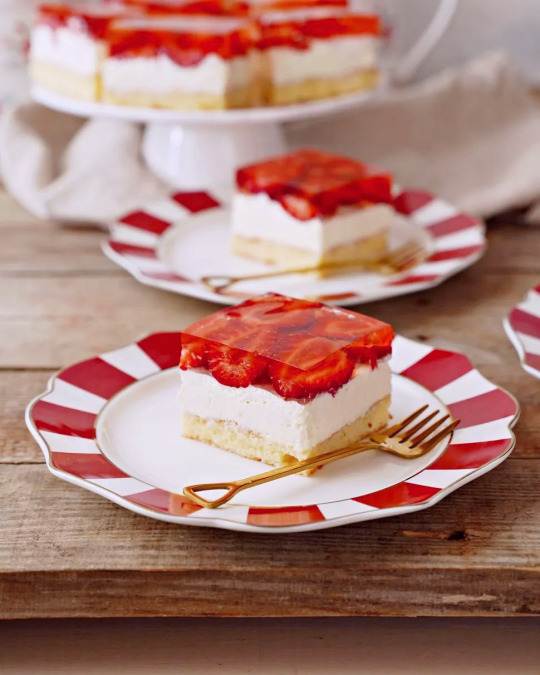
Polish Strawberry and Cream Sponge Cake with Jelly (recipe in Polish)
#sponge cake#strawberry cake#cream cake#strawberry cream cake#polish food#polish cuisine#poland#food#foodblr#dessert#sweet tooth#strawberries#strawberry#summer#jelly#baking#cake#dessert recipes#slavic#cake recipe
172 notes
·
View notes
Text

Homemade haluski
2 notes
·
View notes
Text
okok I know that Jayce is like. Runeterra Hispanic and Viktor is Runeterra Slavic so it's natural to map those culinary habits onto them. And I'm not here to take that away at all I'm here to add to it. Because CONSIDER that Viktor is the one who grew up in the underprivileged, extremely impoverished areas with lots of canals, right on the river full of fish/water bugs that, assuming they're even edible, would taste like river fish and bugs which is to say they taste like mud. It's cramped and damp and likely warm from geothermals depending on how deep those fissures go.
So all the settings for food you would want to make taste like anything other than what it actually is, and food that you would want to add antibacterial spices to. Chili peppers need light yes, but they're insanely productive with small space (source: i have been overwhelmed by peppers from one I had in a that got less than 8 hours of light) and Zaun does have the upper levels. Chili peppers are very easily preserved into long lasting sauces or powders and Cajun food okay I'm putting it out there that Zaunite cuisine could be very Cajun
Anyway what I'm getting at is that it's no reach at all to headcanon that Jayce thinks he likes spicy food until he sees Viktor casually bite into the Runeterra equivalent of a habanero like it's a snack.
#arcane#arcane meta#viktor carries a bottle of hot sauce with him that he can only get in the lanes and it should be classified as a chemical weapon#im not kidding hot sauce is stupid easy to make btw#i still have bottles from my surplus of habaneros from 3 years ago#do you have any idea how many fucking habeneros one plant can make and that thing didnt even get full sun
134 notes
·
View notes
Text
Looks like we had Zjnomo beef for solstice dinner the year before last.


Day 13 Štědrovečerní večeře table runner.
40 notes
·
View notes
Note
what do you think prythian's food is like? Like how does the food differ in each court? Which one is known for spicier food? Or meat centric or veggie centric food? Summer would probably have more seafood right?
The Food of Prythian Headcanons
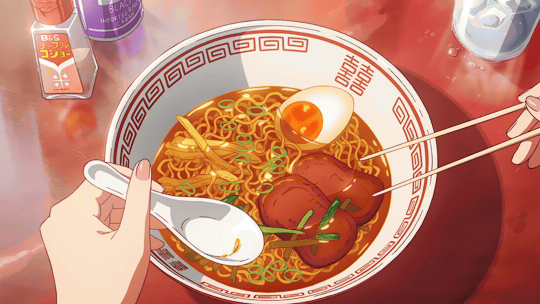
Warnings - Mentions of alcohol. While this is food based, it is based on the vibes of what I felt the culture of each court would be like in comparison to real places in our world. Some of these may be discussion worthy. We handle that in polite ways. Also, Liz thirsting over Helion's thighs.
A/N - The gif had to be Anime food. No cooking show makes ya girl hungry like anime food does. Welcome to the beginning of the requests being queue. Some of you have waited a very long time for me to get out of my funk. I cannot thank you all enough for that.

Spring-
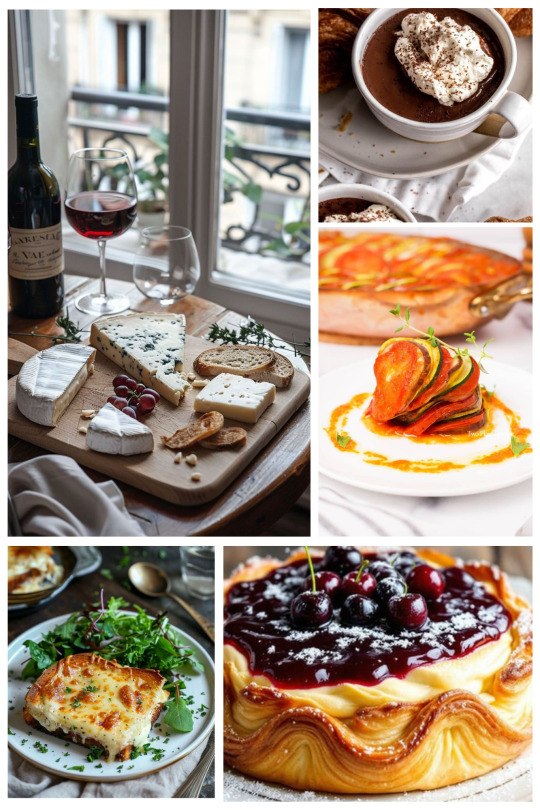
Spring in my opinion would be French style foods. Why? Because of how SJM described the molten chocolate Feyre had.
I imagine Spring to have fresh ingredients that, combined with meats, make light but filling meals and vibrate plates.
I see Tamlin as the cheese board kind of guy. I think Spring would be filled with different cheeses from around the map and lands and people capable of telling you all about them and proper pairings.
Wine. I know we hear about wine a lot in Night, but I will never drop the headcanon that Spring is 7 course meals with different wine pairs as the meal progresses
Overall, I imagine Spring to be filled with dishes that are focused on fresh and quality. I think they'd have a wide variety of options for meats and game.
Ps, edible flowers. They garnish plates with edible flowers
Summer-
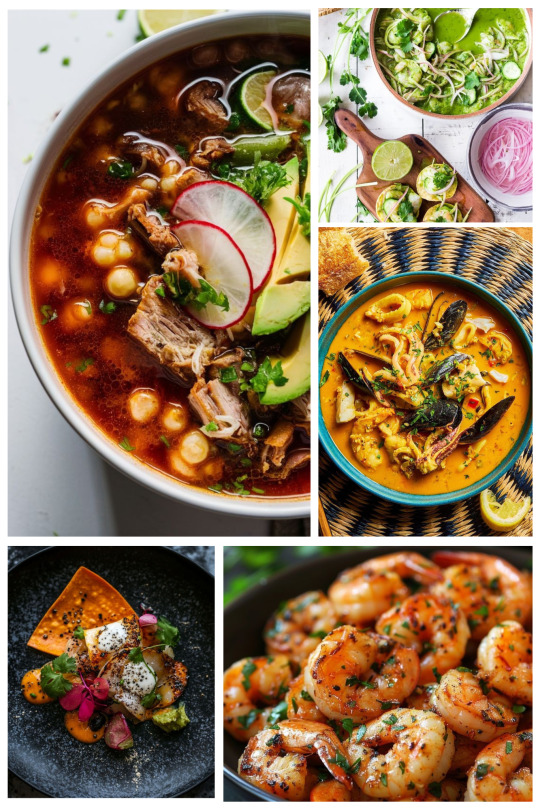
Hear me out, I think Summer would be a combination of Hispanic and Latin foods
Summer is seafood heavy, no doubt. Fresh catches served after flavorful preparations.
Summer isn't afraid of seasoning. Nor spice. I think in terms of getting your spicy food fix, Summer is your best options.
Access to fresh fish and summertime thriving fruits such as limes and lemons, naturally Ceviche is a very common dish to be served and a traditional welcome meal for guests.
Pazole would also be right up there with the incorporation of fresh peppers and produce to make it flavorful and impactful.
Alcohol pairings in summer also include fruity mixes. Tarquin is a margarita on the rocks baddie. I will die on that hill.
Autumn-
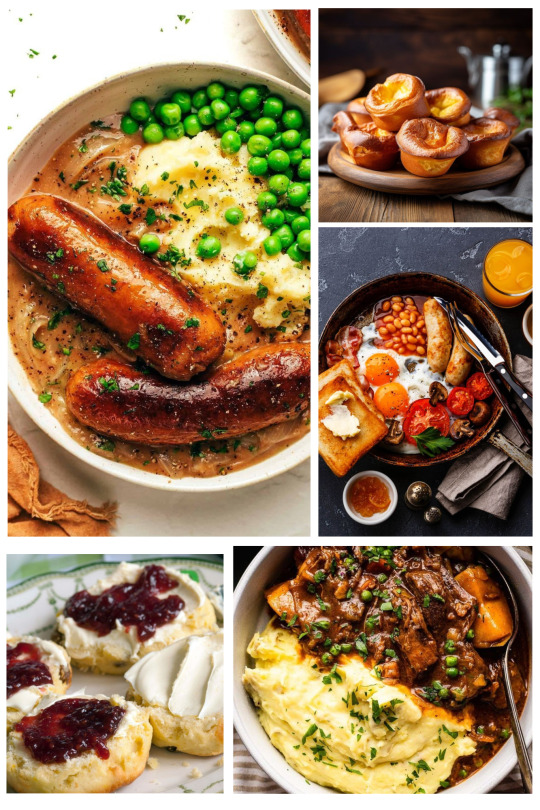
I'm hiding from how controversial this one might be. I was torn with Autumn because of how Eris and Lucien are written. I think the Forest House with the High Lord and his family do not eat traditional Autumn cuisine and try to separate themselves. So, for Autumn, I am torn but will be focusing on my gut instinct.
Autumn is English and Irish cuisines. Hearty beef stews, bangers and mash, Yorkshire pudding. Meals in Autumn are warm, heavy, and meant to be fulfilling at a price point that even the lowest income families can pull off. Spoiler, I 100% think Lucien and Eris are throwing down bangers and mash. Why? Because it feels right.
Breakfasts tend to have a variety on the plate. Eggs and sausage served over beans was an immediate one that came to mind for me.
I think game meat is also very common in Autumn, but farming is the primary meat source. Cattle, boar, and sheep would make up the majority of dishes with chicken being a last choice.
I think fish is potentially common in Autumn, but they are tinned fish central. And let's not bash tinned fish. You can do a lot with it and create meals for a fairly decent price.
Autumn is spiked cider country. Apples grown so rapidly here that they had to find a way to work them into their drinks. Mother bless the barmaid who asked for some rum and said to hold her mead. Apples since have been worked into whiskey, wine, vodka, and whatever else they could sell. Cinnamon apple whiskey is a personal favorite of Eris's. I asked him myself.
Winter-
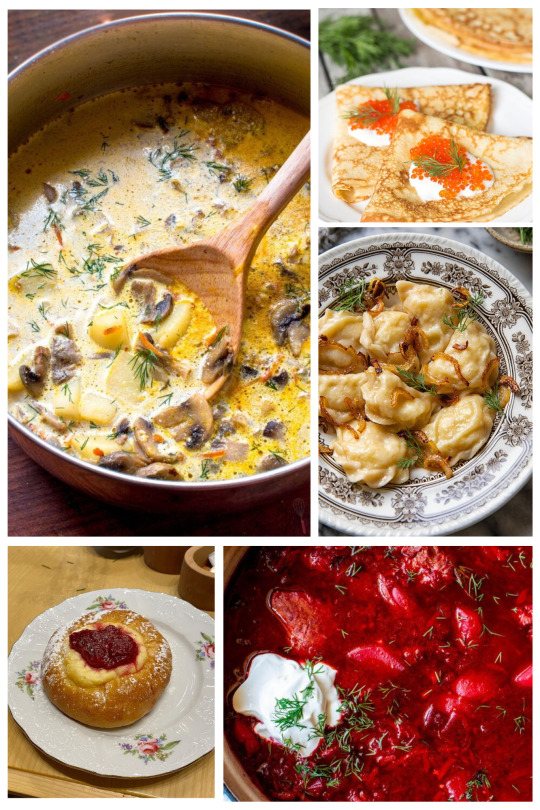
Winter to me has very Slavic vibes. With it being so bittery cold, though, I imagine their diets are filled with soups and very heavy stews.
Winter is a season that would struggle with produce and with how I picture trade systems working in Prythian, I'll bluntly say it, Winter is the pickled everything part of Prythian.
Pickled fish, vegetables, and olives are all very common ingredients in meals and as snacks.
Root vegetables such as onions, garlic, and potatoes are featured in every meal. They're known to grow in harsh environments, and paired together can be a great base to a meal.
Game meat is common here. Venison, elk and some options that we may less commonly think of such as bear, fox, wild big cats, and rabbit
Drinks wise, like the foods, it is about warmth. Mulled wines, warm ciders, anything to keep their hands warm and bellies full.
Dawn-
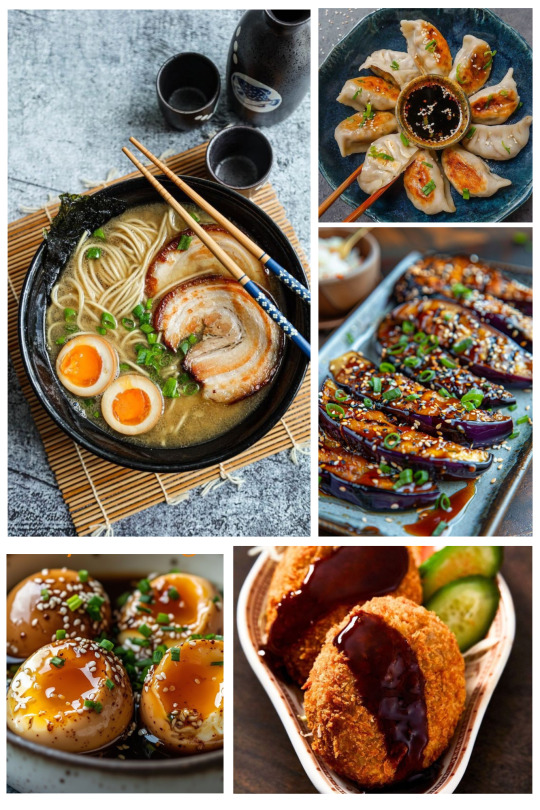
It would have been far too easy to argue Dawn is 24/7 breakfast, but I think Thesan is very into cuisine that touched the homelands of his Court's population.
Dawn is heavily leaning to Japanese and Asian styled foods. Bright dishes, bold flavor, and full of experiments and experiences. I don't think there is a dull meal in Dawn.
Dawn is filled with brothy soups centering around rich cuts of meat, different styles of noodles, and an ever rotating flavor profile as seasons change.
Seafood is common in Dawn, but they're open to trying any form of proteins. Eggs are a favorite.
I think meals in Dawn vary from you feeling heavy and ready for a nap afterward to something light and refreshing. I think this variation comes with seasons and availability to ingredients.
Dawn is drinking a variety of things. Hard liquor with touches of fruit, hearty beers, plum based wines, and teas. Dawn is filled with variety in the beverages, all paired perfectly to compliment meals.
Day-
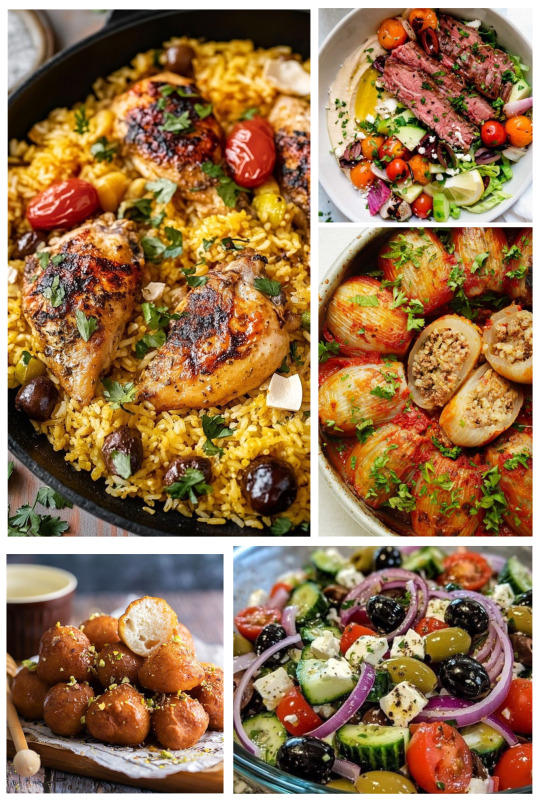
Helion and the Day Court had to be a Mediterranean diet. I won't apologize. She can't describe thigh daddy as wearing white togas, snake arm bands, and not expect me to decide he serves me my favorite cuisine post... thigh admiration.
I also feel this works well with the Day Court due to me picturing it as a similar situation where the days reach high grueling temperatures and Nights are made for dancing under the moonlight in anticipation of getting to see morning break and the sun begin to rise.
The Day Court is light meals during the day hours that center heavily around fruits, vegetables, and seafood kissed with notes of citrus. Nights are slightly heavier with touches of beef and lamb joining in.
Hummus. There's various hummus bowls at every meal, and each one is a different layer of flavor or spice. Helion ensures they are served with a variety of root vegetables, pita breads, or falafel.
Drinking is common, but beers are not. Even beverages are kept light in Day. Of all the courts, though, I feel the Day Court is heavily pushing water intake.
Night-
Full discretion. I wanted to break the Night Court into Velaris, Hewn City, and Illyria. Due to tumblr LIMITING MY CREATIVITY (jerks) i am focusing on Velaris.
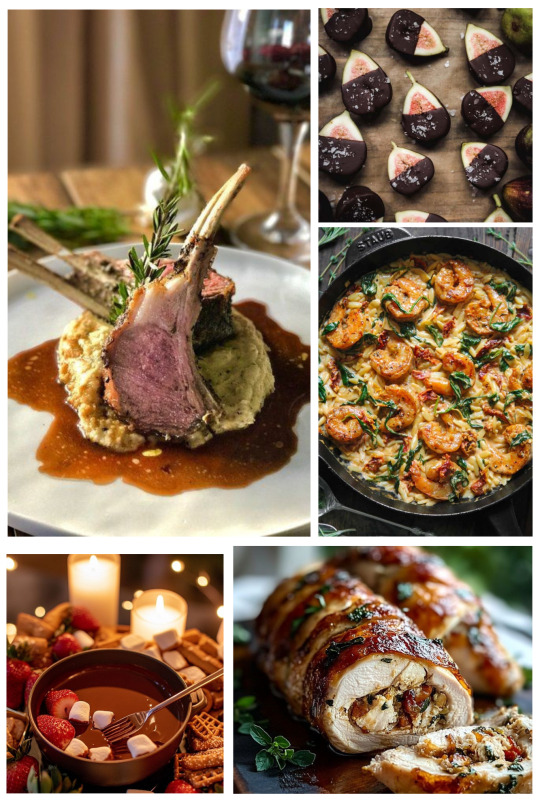
Have you ever wanted to make love to your food or make love because of your food? If so, "Welcome to the Night Court."
I think Velaris doesn't necessarily have a region of food from our world, but instead, it is a melting pot due to the variety of citizens and walks of life there. One thing is always true, though, artistic expression is worked into food.
Velaris is known for gorgeous plates, high end cuts of meats, and things being extra. It is common to see edible gold leaf in Velaris.
Proteins wise, I think due to the melting pot, there isn't a common or most popular choice. Venison, beef, lamb, chicken, and seafood are all common. I do think Velaris leans towards roasted vegetables, though. Roasting them can bring out flavor and, most importantly, color. I heavily believe presentation is key here.
Chocolate dipprd fruits are a favorite, but dipped figs with a touch of sea salt are a go to dessert.
Wines. Prepare for wines with every turn. Full bodied reds, crisp whites, flirty rosé, and oh so bubbly champagne.
In short, food in Velaris is meant to make you feel something, to push boundaries and flavor palette, and to fill your tummy.
81 notes
·
View notes
Note
OMG YOUR SIMON ONE WITH HIM LOVING TO EAT REMINDED ME OF THIS
https://www.tumblr.com/ghouljams/762729056884178944/making-food-for-ghost-and-silently-panicking
Coming from a place that people always say the food is unappealing or nasty, this did WONDERS, for my brain
THATS SO SIMON. I swear this man would be so happy to try new foods, gobbling down every bite, groaning on a particularly good ones😭
As someone deeply familiar with Eastern European cuisine, the way he would be so well-fed, so satisfied and so interested in whatever is cooking. Pierogi? Yeah, bring them on love. Borsch? Never tried this one before and you made it with BEEF? Love, pour the bowl, he’s going to inhale it as we speak and ask for seconds.
I’m not sure how much of a fan he’d be with pastries but he doesn’t seem like the man to ever say no to a dessert so pies and buns and trdelniks and cookies — he will try each and every one.
I feel like Simon is the person who loves food but who doesn’t have nearly enough time to try out new things so if he had a spouse/friend that would feed them things from their cuisine and introduce him to new tastes…he’s measuring the size of your ring finger while you sleep.
But yeah, Simon loving to eat and finding joy in something like that after very food insecure and impoverished childhood makes me (a person who was very good insecure and whose family treated food like there was something wrong with needing substance. Goddamn thin Slavic girl stereotype that flooded media in early 2000-2010s) feel so good.
Also thank you for sharing this piece with me! Simon eating uppppp traditional Ethiopian or Mexican cuisines…I didn’t know I needed it. But I do now.
God bless this big man and his bottomless pit of a stomach and insatiable hunger for care and homemade foods
#call of duty#girl.asks#cod mw2#girl.snippets#simon ghost riley#simon ghost x reader#simon riley x reader#simon riley x you#ghost x reader#simon riley
121 notes
·
View notes
Text
my family was never really into the national cuisine, but i remember coming over my friends' places, and id always be so shocked by the amount of fat, meat and dairy that was in their food 💀 i was overwhelmed by the oilyness of it all
'slavic doll diet' 💀💀💀
the slavic diet is half potatoes half cheese. why are you eating avocados and gruel 💀
the real slavic diet consists of:
-preserved meat (salami, smoked meats)
-butter and animal fat
-sourdough bread
-strongest homemade alcohols known to man
-black cofffe
-dumplings. soooo many duplings. bread dumplings, potato dumplings, dumplings filled with meat and or cheese. potato dumpling things with fried onion, meat, saurkraut and sheep cheese (halušky 😋😋😋😋), dumplings filled with fruit or poppy seeds and doused in butter
-soup/sauce thats just. the fattest meat boiled for several hours/overnight
-sooo much pickled stuff. pickles, cabbage, beet....
-buchty (pies?? sweet yeast dough, often filled with jams or poppy seeds)
no traditional slavic food is vegan guys, bcs ppl WANTED the calories to. yk. not die. actually, if u look at the food, it reflects that: its fatty, but with limited variety of ingredients and everything is preserved, smoked, pickled, made into jam, dried, etcso it can llast the winter. all the plants that are used in the food are plants that can survive in a soil that isnt really. friendly.
#čumblr#slavic doll diet#tiktok#diet culture#slavic#to clarify i actually really like avocados but they just do NOT belong into slavic cuisine
355 notes
·
View notes
Text
141 x Eastern European reader relationships hc’s
Warnings: some cussing, stereotypical behavior, pretty much safe, not meant for russians - just scroll past
A/n: I was heavily inspired by this post by amazing @kivino, absolutely go and check it out!!
Pretty much all of 141 were in Eastern Europe with missions - Ghost and Price were with missions in Ukraine, Soap, Gaz and Price were to russia.
All of them worked with Eastern Europeans, so boys are generally acquainted with Slav traditions and superstitions - not to whistle within a building, for example, or not to pass things through the threshold. But working with Eastern European for a few weeks and having a romantic relationship with one - completely different things.
So here are some headcanons of how Task Force 141 deals with their Slavic lover<3
Simon “Ghost” Riley
Starting off - Simon loves your culture. He finds many national quirks amusing; his favorite one tho, is how boisterous and bossy Eastern European women are. Usually people tend to be scared of him due to his intimidating stance and quiet behavior. But these ladies who are barely over 160 cm? They can beat the living shit out of him with a single slipper, and he both respects and slightly fears them for it.
For some strange reason Ghost can’t learn a word you teach him, but all the swearings that accidentally slip off your tongue throughout the day? Ghost knows all of them by heart. And he can’t hide a small smile of amusement whenever he hears you cussing angrily over spilled tea or shattered mug. And his favorites so far are ‘kurwa’ and ‘blyat’
Simon is a huge fan of your country’s cuisine! He’s a big man, so he requires proper nutrition. And all the delicious meals your mom cooks? He’s nomming everything to the last crumb! Simon is especially fascinated with a godly meal called “shashlik” - he is definitely a meat eater, Riley loves him a juicy steak freshly off the fire. And eating a meal that consists purely out of roasted meat - a paradise for him.
Captain John Price
Now, this man is most acquainted with all Slavic traditions of all 141 since he works closely with Nikolai, so throwing him off wouldn’t be that easy. But still, having an Eastern European partner does give him some unexpected experiences. For example, John is really surprised by how easily and lightheartedly you and your family joke about dark topics as death, physical traumas or alcoholism. And while everyone is rolling with laughter Price is like “What the fuck is wrong with you guys🧍🏻♂️”
If some of your relatives happened to speak English, John will do his absolute best to speak slowly and reduce his accent to minimum, so that they can understand him better. I think it’s just so sweet of him 🥺
What never fails to impress Price is that how much Eastern Europeans care about their appearance. In UK people don’t bother much about their looks, preferring clothes that are comfortable rather than fashionable. And seeing all these people on the streets wearing luxury brand stuff, women with full on glam makeup, their hair made elegantly - it makes him wonder just how much time and effort these people put into their looks. (He soon learn just how expensive and tedious that is once you two start dating)
Kyle “Gaz” Garrick
I’m pretty sure many Eastern European countries have this magnificent dish - meat jelly. Looks and sounds terrifying, true cultural shock for Kyle’s poor British soul. Or soup called Okroshka - even tho I grew up eating it, I still question its existence, no wonders Kyle gets absolutely weirded out by it.
Many Eastern Europeans, especially in small towns and villages, are very unfamiliar with people of color. It’s not because they mean ill, no, but simply because it’s very rare to see foreigners in such places. So, when Kyle came over to your home for the first time, all neighborhood was quite literally gawking at him. And Garrick, being more closed-off and shy person, was really unnerved by it. What especially set him off was when some random grandmas on the streets asked him “Whose are you?”😭
Oh and he loves, loves, loves when you spill the tea about your family members, sometimes even in front of this exact person bc they can’t speak any English. Sounds mean to do so, but Kyle is very eager to hear about all the drama, glancing discreetly at relative in question. Everyone thinks it’s so cute, watching you two cooing at each other in soft voices in a faraway corner, but in reality you two are just talking shit about everyone in the room😂
John “Soap” MacTavish
What Johnny likes the most about Eastern Europeans is just how generous they are, how they treat all guests with such kindness and hospitality. Usually, when Scottish/British/Irish person invites you for some tea - you do have tea and some sweets. In Eastern Europe though, if you are invited for some tea, you will be having a three meal course of delicious national dishes with incredibly tasty bakery for a dessert, and, of course, tea as promised. And afterwards they will also give you some food in a plastic container so you can take it home. Johnny was genuinely surprised by such warm treatment.
He remembers a lot of random words you say: names of different objects and foods or whole sentences like “turn on the lights” etc in your mother tongue. Johnny likes listening to you talking on the phone with your relatives, his ears perk up slightly whenever he catches a familiar word. But can he actually spell or write these words down? Not really. And if your language uses Cyrillic alphabet? Absolutely no. (This thought came to me based off @kivino’s hc’s)
When Johnny visited your home for the first time, he was actually surprised to see this stereotypical picture: a bratz doll gf and her shreck bf. He was also surprised by how unattractive most Eastern European men are, especially those in their 40s.
Likes, reblogs and comments are highly appreciated! Feedback is very important for writers, give us some love and appreciation<3
#simon riley#simon ghost riley#ghost mw2#ghost cod#ghost call of duty#ghost x reader#simon riley x reader#simon riley x you#simon ghost riley x reader#john price call of duty#john price#john price cod#capitan john price#john price x reader#john price x you#john soap mactavish#john mactavish#john soap mctavish x reader#john soap mctavish x you#soap mw2#soap call of duty#soap mwii#kyle gaz garrick#kyle garrick#kyle gaz garrick x reader#kyle gaz garrick x you#task force 141#call of duty#call of duty x reader#task force 141 x reader
209 notes
·
View notes
